Catching Up! | School Start Dates, Teacher Shortages, and Identity Formation
Key Points
-
Address teacher shortages by focusing on retention through mentorship, collaboration, and rethinking educator models.
-
Understand and support adolescent identity formation by creating opportunities for healthy risk-taking and purposeful connections.
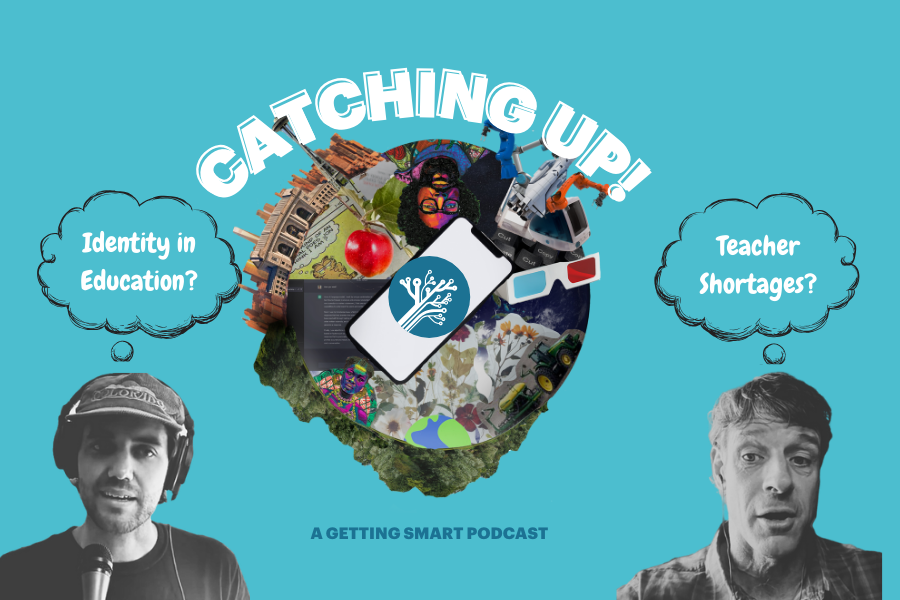
In this episode of the Getting Smart Podcast, Nate McClennen and Mason Pashia explore key topics shaping education today, from the varying start dates of schools across the U.S. to the global progress on Sustainable Development Goals (SDGs). They dive into data on teacher shortages, discussing challenges with retention and exploring innovative solutions like rethinking educator models. The conversation also touches on the neuroscience of adolescent identity formation, emphasizing the importance of creating opportunities for healthy risk-taking and personal growth in schools. Tune in to hear insights on how schools can address current challenges while fostering connection, curiosity, and purpose among learners.
Outline
- (00:00) Introduction and Agenda
- (04:02) Global Goals and School Meals Progress
- (07:40) Public School Perception Survey Results
- (12:48) Teacher Shortage Data and Analysis
- (17:36) Rethinking Teacher Models
- (27:28) Identity Formation and Adolescent Development
- (37:23) Human Expression and Connection
- (42:47) What’s That Song?
Introduction and Agenda
Nate McClennen: Welcome, everybody. Excited for a new episode of Catching Up. Hey, Mason. And hey, on my agenda today, I’ve got a lot of things. One is that it’s the fall, it’s the start of school, and we’re going to talk a little bit about start dates and why they are so different across the United States.
We’re going to jump a little bit into some reading questions about why we aren’t reading as much. And my deep dive, at least, is around teacher shortages because so many people are talking about so many pieces of data around teacher shortages. I wanted to get to the bottom of it. So we’re going to dive into teacher shortages for a little bit and talk about the data and what maybe schools can do to prevent the attrition of great teachers.
What about you, Mason?
Mason Pashia: This week, I’m doing a little bit of a closer look at the global goals and where we’re at on our 2030 time horizon and trajectory, with a specific emphasis on something schools are doing to really advance that agenda. And then additionally, we take a look a little bit at the neuroscience of identity formation and really making values-based judgments.
This builds on a couple of conversations we’ve had over the last few episodes. We get to learn about Nate’s soccer haircuts a little more, so it’s going to be great.
What did I [00:01:00] miss?
Mason Pashia: I’ve been hearing this joke recently that if you are an adult male, the only way to keep friends is to start a podcast with them. And I think that’s also true—the only way to catch a busy coworker is to start a podcast with them. So, I’m grateful that we have this to continue to see each other.
Nate McClennen: Yeah, no, it is good. And it actually, it’s cool because it forces me to collect my thoughts over the last couple of weeks and say, what have I been learning? What am I interested in? What do we think listeners will be interested in? So, excited for Catching Up today. It’s been a couple of weeks, and you know, I want to start out by just thinking—it’s the start of school.
I was really interested in this probably not important fact of when school districts start and what’s the latest and what’s the earliest. So, I did a quick little research project and found that I think the earliest school district start in the United States this last year was Chandler Unified School District in Arizona, which started on July 16.
Mason Pashia: Whoa.
Nate McClennen: That is crazy. And then I did a little bit more of a deep dive and found that 47% are starting before August 17, and then only 16% are starting after Labor Day now. So, there’s been this shift. And then the other interesting thing is that the earlier starts are more in the southern part of the United States rather than the northern part of the United States.
I’m not quite sure why. Maybe it’s air conditioning and heat. I think that there’s better cooling areas in schools maybe, but that’s just a hypothesis.
Let alone when the school day starts—the school year as well. And some people are ready for it to happen, and some people are saying it’s too early, too late. There’s a lot of mixed opinions on this.
Mason Pashia: Totally, totally.
I’m going to do my quick intro. This share is about food, which is important, and at Getting Smart, we write a lot about the SDG global goals.
And I was really curious, like, where we’re at on those. I feel like we throw them around a lot as if they’re just sort of like this thing that we’re encroaching on and we’re inviting students and they’re [00:03:00] solving these problems. But I found a little bit of research on our current status report with a school focus at the end.
So, we have about five years remaining until the 2030 deadline, which was sort of the first landmark for the SDGs. And the SDGs are focused on these six core transitions: food systems, energy access and affordability, digital connectivity, education, employment and social protection, and climate change, biodiversity loss, and pollution.
So, we have these huge goals. They’re global. That’s incredibly hard and complex. Thirty-five percent of the 137 goals are either on track or showing what they say is moderate progress. So, this is kind of within the realm of what’s trackable, right?
We have 47% that are advancing at an insufficient pace, and then we have 18% that have actually regressed to where we started in 2015. So, things that are getting worse. I think that this is just like a useful portrait to keep in mind as we’re talking about things because, especially in America and right now, we can get so [00:04:00] focused on how we’re doing, but these are global challenges.
Global Goals and School Meals Progress
Mason Pashia: They’re not national challenges. So, the thing that stood out to me about this is on the subject of food—there are 42 measurable time trends within the food world, and 20 of them have moved in a desirable direction since the inception of the SDGs. So, that’s good news. This is like diet quality, sustainability, etc.
But really, school meals are one of the core things driving this charge toward progress. There are 170 countries now that are running school meal programs. Sixteen countries have actually enshrined this right to adequate food for youth within their constitutions. The domestic investment is at $48 billion a year, and in the last two years, an additional 20 million children have started receiving meals across Africa.
So, I think when we boil these facts down into this 35%, whatever, it’s so hard to grasp what that means to be successful in a thing. But an additional 20 million children getting school meals in Africa is incredible news and sort of [00:05:00] built on this framework of these SDGs and what it means to actually catalyze and mobilize a global force.
Nate McClennen: Yeah, I mean, I think that makes me think of two things. One is sort of the power of sustainable development goals as a driver. And we often, in my prior work, would use SDGs as the guidance for what SDG are you trying to tackle now with this particular project or this particular difference-making purposeful project?
Because you and I have talked a lot about when a lot of our work is individual, how do we make sure we ensure the common good? And SDGs—the sustainable development goals—are great common-good type experiences. So, that’s number one.
And it also makes me think about the power of schools to do more than just teach, right? These are wraparounds like community schools in the United States. They provide healthcare and food and all these kinds of things that are really, really important.
We often don’t think about schools as places where students go to eat. We think about them as places students go to learn. Yet across the world, like you’re insinuating, but also in America, there are many, many students that get breakfast and lunch every single day of the week at their schools. And so, that’s really powerful work and really important to keep kids well-fed so their brains work well and they can learn a lot.
Mason Pashia: Totally.
Nate McClennen: Yeah, it’s interesting—the 2030 deadline. Is that five years remaining? And to see where we are, it’s a pretty big effort to continue to track these things, but I appreciate that it’s continuing to happen.
All right. A couple of other things for you, just in my data-gathering mode over the last couple of weeks. One is the PDK did a survey on support for public schools, and I think we’re seeing a lot of headlines about this eroding trust for public schools. They reported 13% support nationally for public schools, meaning respondents rated public schools in general with a letter grade that is an A or a B.
So, fairly arbitrary, but this idea that public schools are good. But also, those respondents would rate their local schools—40% would be in support at the high level. So, there’s something about, we believe, at least respondents to this poll believe, that while a lot of schools are not good in the United States, it’s not our local school. But there’s irony there and actually conflict because if everybody reports 40%, then that covers the rest of the schools, right?
And then the other piece was this idea of choice of school alternatives, like private schools, and 60% would choose private schools. The poll is national, so it’s not just parents of kids who have students enrolled in schools. It’s anyone in general who responded to this survey.
Public School Perception Survey Results
Nate McClennen: So, there are some biases associated with that. But it did make me think a little bit about—we know that support has been dropping, at least according to polls. And I think as we talk through work at Getting Smart and talk in the landscape, how do we change this, right? How do we rebuild confidence in the public sector, rebuild confidence in what students are learning, and the outcomes they get?
I think a lot of the work that we do at Getting Smart, and a lot of our partners that do work in this area, are thinking about this—about how do you redesign school to be an incredible place to go where you’re maximizing your learning, maximizing your belonging, and maximizing your long-term outcomes, whether that’s military, higher education, or the workforce.
So, just paying attention to surveys for what they are. It’s interesting. I think we have work to do considering 90% or more of students are attending public schools. We need to make sure that people—the perception of them is really strong as well as the quality of them inherently.
So, that’s one. And then the second one, and then I’m curious to hear your thoughts on both of these, is this idea of reading. I was a voracious reader when I was a kid. Actually, I didn’t have a TV until middle school, and that’s when my brother won one in an art contest. Then we had a little black-and-white TV that we started watching—30 minutes of public television a week was my parents’ rule.
So, I was at the library all the time, and I read all the time, and I still read all the time. The NAEP, National Assessment for Educational Progress, not only assesses reading, writing, and math, etc., but they also ask some survey questions.
Over the course of 1984 to 2023, the proportion of 13-year-olds who say that they never or hardly ever read for fun on their own time has nearly quadrupled—from just 8% to 31% over that period of time.
And so, that really made me think about some other conversations we’ve been having about, in a world where video and short-form video, like YouTube Shorts and TikTok, are where more and more young people get information and the scrolling is easy, what happens to books?
And how do we get people reading for pleasure? Or am I just being a Luddite? And you know what—they’re actually going to be looking at video more, and will books become extinct?
So, Mason, [00:10:00] there is the big question today for you.
Mason Pashia: Will books become extinct? Well, having just recently published a book, I hope that they don’t become extinct. I am a fellow Luddite in the “I read a lot” world.
Okay, on the book front, I think it’s really tough. I was reading an article—I think it went out in The New Yorker recently, but it was quoting the economist Tyler Cowen.
It was talking about how reading and readership is going down, but the reason to write is going up. Tyler Cowen’s basically like—he’s been doing a blog on Marginal Revolution for over 20 years, and at this point, he’s like, he’s writing some pieces that people might not be interested in. They’re just about when he was six.
And he’s like, someday a bot’s going to be trained on me, and I want it to have a comprehensive view of who I was so it can give accurate responses. So, the inputs of what writing a book does, I think, will continue to be beneficial.
But on this audience question, I think the second we have a true voice-and-speech-native culture, I think books are going to really struggle to keep up. If we get into this world of Her that everyone’s always talking about, where you have the sort of smart earpiece, I think that just the sensory prioritization will shift such that reading becomes less of a place where you go—even just as a “this is what I could do with my time.”
I think one thing that we’ve talked about maybe before is that reading is so much more than escaping, and it’s so much more than learning. It’s really this invitational act of multiple engagements over a long time horizon with the same work.
So, you’re changing while you’re reading a book because you’ve lived four weeks in the time it took you to read Moby Dick or something.
Kind of dodged your question. I hope books stay relevant. They’re still the best way to bundle information. I have, unfortunately, not a whole lot of faith that that industry’s going to stick around in the same force of entertainment. But I guess we’ll see.
Nate McClennen: Yeah, I think we’re going to see the percent of students that are not reading outside of school continue to grow. And as those students become adults and then potentially raise their own families, that’ll be passed on.
Because, you know, when I grew up, I grew up in a house—there were a lot of books in my house. So, they were always around, and we went to the library and things like that. We had a library available. And I don’t know what’s going to happen, but it feels like the way you describe it is that it’s almost inevitable.
And how do we prepare for that shift? We are doubling down in the United States on the science of reading, right? So, we want people to be literate because people need to be literate. But maybe the base level of literacy is where it stops—so that you can read road signs, legal documents, or whatever the case may be.
But reading for pleasure is replaced by other things for pleasure that are other media formats.
Teacher Shortage Data and Analysis
Nate McClennen: All right, let’s do some deep dives. I wanted to start today with a deep dive into teacher shortages because we hear a lot about it. It gets broadcast a lot on mainstream media. And by mainstream media now, by the way, I’m saying anybody who’s broadcasting—that could be a single person somewhere, or it could be a news source that’s been around for 100 years.
So, mainstream media to me is things that are out there that people are digesting. And so, I was interested in this because people always commonly say, “Oh, we have a teacher shortage challenge.” And I believe that—I’ve heard enough stories and anecdotes. But I wanted to look at the data.
So, I did some deep dives, and I want to share that with you and then talk a little bit about how to address this issue and see what you think.
The Learning Policy Institute did some really good surveys, and we’ll put it in the show notes about the numbers. So, 48 states plus the District of Columbia employed an estimated 365,000 teachers who are not fully certified for their teaching assignments. So, under-certified.
That’s one data piece there. Thirty-one states plus D.C. published data on vacancies, showing about 45,000 unfilled teacher positions in this survey.
And we have to give that some context. There are about 3.2 million teachers in public schools in the United States. So, we’re talking about 1% to 2%. We’d even go higher—probably 2%—because we’re only at 31 states.
So, you have about a 2% vacancy rate, which doesn’t seem like a lot in terms of percentage. But when you’re dealing with 45,000 teachers, that means there are 45,000 classrooms that don’t have the right teacher in that classroom. Either they have a paraprofessional, someone who’s under-certified, someone who’s not trained—it could be a principal, it could be a volunteer, who knows what it is.
The areas of high need are not particularly surprising—special education, science, and math have the highest vacancies.
So, I started thinking about what the issue is, and there’s some intuition I have, but I wanted to verify it with what at least the data was saying.
A couple of things are happening. One is there is a thesis that we’re having fewer and fewer young people go into the teaching industry. So, enrollment in pre-service between 2016-2017 and 2021—27 states have seen an ongoing enrollment decline of 5% or more. Seven had relatively flat enrollment, and 17 states plus D.C. saw an increase of 5% or more.
So, that’s variable. It’s not a trend across the country that all undergraduate pre-service training programs or universities are struggling with enrollment. Some absolutely are struggling with enrollment, but the data doesn’t suggest that all of them are.
That data only went to 2021. If I’d had time to dig further, maybe over the last four years, that’s changed even more. But the bottom line is, we need to recruit more people into the profession for sure. And in order to do that, they have to see that being a teacher is a valuable thing and worthwhile in the long run.
Because a lot of teachers don’t spend their entire career in teaching.
The second thing I looked at was attrition. Less than 20% of teachers in the country leave because of retirement, right? So, only one in five teachers are moving all the way forward toward retirement and then retiring and leaving the profession. Everybody else is leaving early.
So, retention is probably the place where we need to really think about.
That then led me down the rabbit hole—what is it that keeps teachers at schools? If retention is the major issue of getting qualified teachers for every single student in the United States, why do they leave?
Some research by EdNow talked about a couple of things that I think are obvious. Is there a strong mentorship program for new teachers coming in? Is there professional collaboration? Are there opportunities to collaborate around things that are important to those teachers and around the school and district vision?
Can they personalize their professional development? This is a huge one. Too much professional development is stand-and-deliver. Teachers go, they get something, but it’s not relevant to what they’re doing, and they’re not engaged.
So, can you create professional development pathways that are personalized?
We’ve been talking about that with the Ed3 DAO work around the portrait of an educator in the age of AI. We need to have probably AI-supported, co-designed professional learning pathways for educators.
And then the biggie, which is hard to do in some of these systems, is voice, autonomy, and role in decision-making.
And this is about purposeful work in general. Humans like to have some voice, some autonomy, and some role. Often in the system of education, public and private, they don’t—they’re told what to do, and they go and teach. But in order to address this attrition problem, we have to give them that.
So, that’s an interesting conundrum. Of course, better pay—only a third think that salary is adequate. When you look at the RAND study, which did a State of American Teacher survey in 2024, only a third think that salary is adequate.
Shorts Content
Rethinking Teacher Models
Nate McClennen: I guess the last thing I would say is, how do we rethink teacher models? You and I have talked a little bit about the Mary Lou Fulton Teachers College down at ASU and their Next Education Workforce program, where we’re rethinking how educators are working in different groups of educators for a larger number of students.
You have expertise developed—you might have a curriculum designer, an assessor, someone who’s a specialist in reading, or whatever the case may be. But you have expertise areas, and you’re working in a much more collaborative environment.
The Next Education Workforce model is something worth looking at if you’re really—if those listeners are trying to figure out how to retain teachers and rethink staffing models.
So, there’s a lot there. I’m very curious what you think and your reaction to that—what you’ve learned and what you’ve seen around as well.
Mason Pashia: Yeah, this is super, super interesting. One clarification on the very first data point, just for my own understanding. So, the 365,000 teachers who are not fully certified—are they just within the whole landscape of the 3.2 million teachers? That’s how many are uncertified? Or is this saying how many people are—and is that implying that there’s a shortage of certified teachers, so they’re having to go through by any means necessary to fill those roles?
Nate McClennen: Yeah, I mean, almost always, in any district, there’s someone who’s under-certified. All states now have some sort of pathway where the district will say that you can get an emergency certification with the basics, or there’s an accelerated pathway to move forward to get certification.
So, that 365,000 is—they are putting people in classrooms that don’t have the certification to teach in those classrooms.
Now, to be really clear, I don’t think necessarily certification automatically makes a great teacher. The private sector doesn’t require certification. I’ve seen great teachers there. But it is a data point that people are tracking, so it’s one that I figured was worth mentioning.
Mason Pashia: Yeah, no, I mean, I think all this data is super helpful. It helps paint a picture that I think, one, it is a challenge and a problem. The solution of actually just getting more teachers in the door and retaining them is going to be a pretty hard, long systemic shift.
I remember the first time when I was traveling abroad, and I bumped into someone from Germany who had just become a teacher. They were like, “I became a teacher because it’s one of the most well-paid and respected jobs in Germany.” And I was like, “That is baffling.” That was really novel to me at that time.
So, I think that takes really big mindset shifts, which is just so hard to do at scale.
This Mary Lou Fulton Teachers College approach of really rethinking the models themselves of how you inhabit a classroom and facilitate learning—my knee-jerk is that that is a more friction-free place to start.
So, I think we’re bullish on that. I think we both are curious about how AI is going to show up in this space and what that’s actually going to do for both the amount of people needed for the same old roles or how that’s going to pivot them. That’s kind of what we’ve been thinking about with the Ed3 DAO work as well.
And I think I just saw a piece this morning that I’ll put in the show notes about how Eastern Hancock is really leaning in on this teacher autonomy and teacher voice place. So, I do think that there are growing models of school districts that are doing that work of actually heavily incentivizing autonomy and voice, and that will just be really interesting to watch.
In parallel with some of these other trends we’re seeing, like microschools—if a teacher is given enough autonomy and agency, are they just sort of like, “Oh, I might just start my own thing. This is great.” At a certain point, what’s the thing that keeps you within the system once you’ve been given this set of parameters versus what pushes you out and kind of gives you enough confidence to do your own thing?
Nate McClennen: Yeah, and that’s really an interesting question. There’s that freedom and flexibility. Let’s imagine a homeschool facilitator—an educator who left the system and has a handful of homeschool students. It’s great—you have ultimate agency and autonomy. You have no support infrastructure or architecture behind you.
So, I think there’s going to be this—I would hope that you could address this retention issue with a loosening of structures where you have a little bit more autonomy and independence for educators.
There still has to be a benefit and a value to being part of the larger organization. And I think those are the great districts that have this really great culture and climate. They’ve given autonomy and agency to educators but also said, “The reason you’re working here is that we can create environments that are supportive.”
Whatever the benefits package is—professional learning opportunities, all these things that are really great to be inside a larger organization rather than spinning off into your own satellite individual school, which is great in terms of autonomy but really hard in terms of facilitation.
Mason Pashia: I think, just to tie back—because I didn’t comment earlier on the public school perception from the earlier prompt—I think this connects. I think this is partially a narrative shift problem. Public schools, I think, get a really bad rap in the press because of our negativity bias that we’ve talked about before, where everybody shares a district’s reading rates have fallen by 6%, rather than highlighting the district whose reading rates have increased by 5%.
It’s like something is just going to always be—it’s a little bit more eye-opening if it’s a negative news source. So, how do we change that narrative shift around teachers? What does it look like to actually spotlight the teachers who have stuck around, who the system has made work for, and make that position something that’s desirable?
Nate McClennen: Yeah, I mean, and I think at Getting Smart, we’re doing that all the time through our media.
Mason Pashia: We’re trying.
Nate McClennen: Always trying to highlight stories of success, things that are working. And there are so many schools and districts, educators, and leaders in those schools and districts that are doing really great, courageous work to help young people.
You’re right—our negativity bias likes to catch the headlines that are saying schools are not good, and that then influences national polls, which say, “My local school’s good, but generally in the United States, they’re not good.” That’s very much a media influence piece. So, thanks for circling back on that.
I think the biggest thing for listeners is, if you’re struggling with this, what’s the data? Why are people leaving? How many are leaving? Especially in bigger districts where you have to get a handle on—it could be potentially thousands and thousands of teachers.
What can you control? What are the technical challenges? Some of those technical challenges might be, we’re going to create PLCs, we’re going to give a little bit more autonomy.
Then, what can you change—these adaptive challenges, which might be the Next Education Workforce model? Things that are second-order change, things that actually break apart the structure that we’ve been used to for the last 150 years and change it to address educator attrition.
Nate McClennen: So, food for thought. All right, what’s your deep dive? What’s a deep dive you have, Mason?
Mason Pashia: Bear with me on this one. This is returning to a few weeks ago when we talked about this idea of tribes and tribalism a little bit vaguely.
It’s also thinking a little bit about those junior republics we talked about, but this is really this idea of individual identity and what it means at a cognitive level, and then how can we reframe what we think identity formation is.
This is identity in the sense of what you value. I think, just to put a definition on it, it’s like if you’re going to make this decision or this decision, and you make decision A, sort of what in your identity made you choose that thing over the other one?
So, I’m curious, for you, just to start off—do you remember, in some of the formative years, what got you into the things that you got into? Whether that be specific music, which is often my case, but also soccer, surfing—these things that you love to do. How did you find them?
Nate McClennen: Yeah, that’s interesting. I mean, I think part of it was exposure. I had parents that were saying, “What do you want to do?” And part of that was musical. I started with playing the recorder in a church organization.
Part of it was probably the people. Soccer—I remember some early soccer experiences, at least in high school. I had a coach who was just an inspiring coach and someone who just made us work hard but also had—it was that first experience of high relationship, high expectations.
Probably the same for educators as well. Some of the teachers I had were high relationships, high expectations. That got me into science and math, which was my background.
It might have been different than the ones that were in humanities. It could have just as easily been humanities if that teacher was there as well. So, it feels like it is the personality of that person and then the context within which they intersect or interact with me.
So, there’s a content piece—sports or music—and then it almost always just goes back to the individual, right? Because it seems like to me, we went for joy in games and being on a team and just playing.
We did a—I had three brothers growing up, and all four of us were athletes but also musicians. And we loved playing things. We were always playing, and our parents gave us a lot of free reign to play.
So, I think the idea of healthy competition and play was great. And soccer happened to be emerging at that time in Massachusetts, and so we jumped on and joined that.
So, it was almost like right time, right place that happened to be that. It could have been something totally different if there was an incredible drama program that was emerging and I was excited about that. That might have been something that I was involved in.
So, it just seems to be opportunistic and who’s around you and what’s happening to provide context.
Identity Formation and Adolescent Development
Mason Pashia: Absolutely. And I think we’ve talked about this actually before, and we never got the resulting photo from you, but eventually soccer haircuts become like a way of telling the soccer story.
Nate McClennen: That’s true.
Mason Pashia: You make choices to keep self-selecting back into the story that you’ve told yourself, which is, “I’m a soccer player, and therefore I do this thing, not this thing. I’m a soccer player.”
So, I think that all of these kind of aesthetic choices, all these choices, factor into the story you tell yourself about a choice that you have made that kind of keeps recalibrating you along that line.
I just wanted to set that up for a little bit because it is messy. And you’ve put your finger on this kind of extrinsic-intrinsic soup that we all live with, with choices.
So, every moment we do have these external valuation factors—these people in our lives, these right-time things in our lives—but inside and intrinsically in our brain, we have these two kind of big science-y terms that I was just learning about.
So, you probably know more about some of this stuff than I do already, but the ventromedial prefrontal cortex, which is sort of in the frontal lobe, is a part of the brain that gets really activated when you have to make a choice between two things.
And then the default mode network, which is basically a lot of the synapses that sort of remember patterns over time of which one you’ve chosen.
So, these are the two parts in your brain that sort of light up when you are faced with making a value. And over time, these values start to shape what that identity is.
So, just a really clear example of this would be if you’re presented with an apple and a bag of Doritos, and you have to choose which one you’re going to eat. That’s kind of like when this part of your brain lights up.
Basically, you have this kind of immediate taste-pleasure memory of the Dorito. You may have these long-term health goals of the apple, and it sort of starts assigning these subjective values to each. And then you make a decision based on decisions you’ve made in the past, some of this external factoring that we’ve talked about.
Some of the study has been done by a person named Elliot Berkman, who talks kind of about the science of why going on a diet doesn’t stick, but becoming someone who has a healthy lifestyle sticks.
If you tell yourself that you are a healthy person and therefore you would not eat the Dorito, you are much more likely to choose the apple than if you were just to say, “I’m actually not. I’m dieting right now,” or “I dieted before, and so I’m not going to choose this Dorito.”
So, that’s just an example of this. And I think building on the science of habits, which has really come into the fold with a lot of productivity hacking in the last few years—which I am guilty of sometimes and also a little wary of sometimes—Berkman also puts his finger on this idea of planfulness.
Planfulness is basically like, if you are going to want to do something, you have to have the ability to craft a plan around how you’re going to do it.
So, you have to decide to yourself if you want to be healthy, if that’s your goal—if you want to have a healthy lifestyle, you have to actually do the work of deciding what healthy means and start to make some of that mapping of, “That means choosing this instead of this,” to tell your brain to kind of make those decisions in the right moment.
So, a lot of this is sort of common sense, but I’m just sort of starting from the brain in order to take us to where I want to go next. But feel free to reflect.
Nate McClennen: I mean, there is something interesting there that sparked for me, which is that exercise of creating this planfulness connects with this deficit we’ve noticed in schools around how do you help young people and educators be better project managers?
In this case, it’s a project manager for oneself, right? “I want to be healthy. So, what does that mean?”
I mean, there is something interesting there that sparked for me, which is that exercise of creating this planfulness connects with this deficit we’ve noticed in schools around how do you help young people and educators be better project managers?
In this case, it’s a project manager for oneself, right? “I want to be healthy. So, what does that mean?” And I think it just sparks for me that we’re making these decisions all the time, and the decisions will then lead to habits, which then habits will help build the identity: “I am something.”
So, what are the things in schools that we can do to influence and help people understand that there is a process going on in our brain when we’re making choices? And how do we plan for the choices we want to make?
That sort of context sets us up for what learning looks like in schools to help develop our brains in certain ways.
Mason Pashia: Totally, totally. And I think honestly, a lot of this conversation was formed by the fact that so many of my friends, who are all in a music world, are really into the same bands that they were into in high school and early college.
You just know it’s really hard to get outside of that bubble of who you loved at that time. So, the things that happened at that time felt really formative to me in a way that I kind of wanted to understand deeper.
This led me into this world of adolescence, which is kind of a buzzword. It’s also sort of a debated term—it’s a lot of things. But I was listening to this conversation with Taylor Guthrie from Morgan State University—I’ll drop a link to that podcast in the show notes. It goes way deeper than I am today.
But he was really sitting with a lot of his identity formation work, and he was saying that in adolescence, so much of what’s happening in the brain is you’re taking all these choices you’ve been making and this broader default mode network, and over time, it’s just pruning them down to be really focused on the things that you think are going to be valuable in your life.
So, like in high school, I thought that music was going to be really valuable in my life, and therefore I really trimmed out a lot of things that were not music-related. Maybe that was basketball in eighth grade. Maybe that was knowing anything about most sports.
I started to trim a lot of stuff out in order to stay focused. And so, I think that’s really important because as educators, we kind of need to be thinking about this pruning that’s going on and recognizing that some of this kind of fits into the pathways conversation we’ve been having.
But it’s like, how do you hedge a bet against pruning at the same time as you’re also acknowledging that someone is trying to spotlight a thing that they care about?
Then, young people tend to have a dopamine pattern that is always pushing them toward novelty and taking risks. So, this is part of the pruning structure, and we know this.
I think that there’s some kind of conversation around, if you present them with healthy risks, then they’ll take those risks. And if you don’t present them with healthy risks, then they’re going to find a different way to take a risk, right?
You’re going to go out and do something that is maybe challenging a law somewhere or challenging safety somewhere.
The scholar and professor and anthropologist Tyson Yunkaporta really zooms in on the Prussian method as being this thing that really reduced the amount of risk that a person could take within this predefined adolescent period.
So, they’re kind of saying the idea was to really slow the transformation from childhood to adulthood into a number of years, rather than a number of months or days, which tend to be the rite of passage for most indigenous groups.
And the goal was to create this permanent state of compliance. They used the same methods that they would use to break horses and other domestic animals—in his words. It’s very provocative. It’s a great book called Sand Talk.
So, I was just thinking about this idea of the ways in which we’ve created this compliance infrastructure, which is working really heavily against the grain of what it means to present students with a lot of choice and risk such that over time they can form identity.
And I do think that the resulting factor of that might be kind of what we were talking about toward the beginning—this idea of sameness. If you’re not creating these abilities for people to take risks a lot, you actually kind of create this homogenous idea of what it means to be successful or a person in this compliance world.
And I think that we’re all definitely wary of that because, especially at Getting Smart, we really value diversity of thought, diversity of experience, diversity of background.
Nate McClennen: Yeah, I mean, that’s a really good question. That’s a lot of really good neuroscience work there.
The idea of your frontal cortex being slower to develop, your amygdala as an adolescent driving the emotional reactions—that causes more risk-taking, and that’s healthy. That’s what’s supposed to happen during that time.
It’s trying to find the check on that so students don’t go out and do something so dangerous that they’re at risk of death or injury.
But how do we tap into that is your fundamental question. How do we tap into this really interesting moment rather than pushing back against it?
And, you know, they have an interesting moment—like zero to five is really interesting for childhood development, and then this adolescent period—two really important growth periods.
So, I do like the idea of how do you teach young people how to be courageous. I think that there is a lot of pressure to conform.
I wonder what we would do in schools to do that. And I think that’s probably pushing—I mean, I remember when we were doing a lot of project-based learning, we would have them pick up the telephone and call adults. That was really challenging for a lot of students.
Or we would, in our particular setting, do experience trips. We would take them out of their comfort zone and do trips out into the woods and backpacking. That would take people out of their comfort zone.
All of those are controlled risk-taking experiences that help brains make all sorts of decisions and practice making decisions around, in this case, safety if you’re in the outdoors, or the ability to act like you know skills that are worthwhile as an adult—making phone calls, etc.
So, I think we need to put young people into these positions over and over again. And in my own family, that’s what we did. We just said, “Okay, it’s time for your teeth to get cleaned. Guess what? You’ve got to call the dentist.”
There are things that we do too much for young people—our own children, our students—that enable them to not develop those skills that are more courageous, more risk-taking, etc. It doesn’t mean they don’t do other things that are risk-taking—they do.
But if we want to mold that or push that into our education systems, we’ve got to give them agency and then give them practice in those skills that take a little bit more courage and bravery and are a little bit more risky than the run-of-the-mill sitting and learning in a school every day.
Mason Pashia: Very, very succinct. And I think you highlighted the key thing in this, which is basically that we tend to push away risk from young people in order to preserve them, keep them safe, etc. And those are very important things to hold in tension with this idea that that is also the core moment where they’re forming so much of who they are, what they value, what they care about.
And I think it’s very possible to over-index on either side. So, I think as school leaders and experienced designers in a lot of cases, we just need to be holding that front and center as we’re working with these groups of people.
Nate McClennen: Yeah, and you mentioned dopamine. I think that’s the other really important consideration—that our brains, you know, dopamine, the drug that our brain runs on. When things release more dopamine, we are going to be more engaged and more willing to do it.
So much of a young person’s life outside of school is filled with dopamine-rich experiences. That may typically have been in extracurriculars—meaning sports, drama, or bands—where you were out, you were performing, there was a little bit of a risk.
Now, more and more, unfortunately, it’s dopamine through scrolling Instagram feeds, TikTok, and YouTube Shorts. We get these little squirts over and over again, designed really carefully by very smart people to keep us moving on the system—these technology products.
As an educator and as schools, we need to think about how we have the right amount of dopamine release that’s allowing a student to want to learn more in that particular area, learn more on that particular project, etc.
When we talk about difference-making projects, there’s some sort of release that’s happening, like, “I care. I have a little squirt of dopamine. I’m going to go more into this.” Or, “I’m interested in this because the teacher’s given me a choice.” A little bit more dopamine, a little bit more interest.
We’re combating this quick dopamine, quick satisfaction world outside of schools with a system that is very dopamine-deficient—I think a traditional education system.
Mason Pashia: Totally amazing. All right, should we get into our human expression section for today?
Nate McClennen: What do you got for me?
Mason Pashia: All right. So, as I mentioned at the beginning, I recently put out a book called Kestrel and Other Songs. It’s like a poetry collection. It’s fun to have a physical thing in the world against the trends of books not being as popular.
But I had a friend call me who bought it, and they were like, “Hey, I want to talk through some of the stuff in this that I liked.” And I was like, “Oh, that’s really sweet. That’s great.”
And then they just went page by page and talked about the thing that they liked about every page in this book, which I was not at all expecting. I was just on a walk, and we walked—I walked around for like two hours.
It felt like such a generous gift for someone to do that as just an expression of, “I care about you. You made a thing that I resonated with, and this was great.”
And it also really made me think about just how important the kind of metacognition is of identifying why you like something or why you don’t.
I think last week I slacked you about this when you sent me a song that you had been working on. I was like, “Oh, what do you like about that song?” And you were like, “Interesting.”
And I think we go through life so much getting these kind of aesthetic responses that are really instant, which feel good. I think there’s nothing wrong with that.
But I do think that if you actually reflect on why you like something, it gives you more language to find the things that you like again. And in a world where algorithms are doing that work for us, I just think it’s really important to be able to have agency over your own kind of taste and curation.
And as a skill, we’re also hopefully trying to teach young people through a lot of this curation and evidence and metacognition work that we’ve been talking a lot about.
Nate McClennen: Yeah, no, I love that. And just being curious, right? Like you were curious about what someone thought about the book, and they told you, and then that leads to an in-depth discussion. That’s exercising those muscles that are really, really important.
So, I was at a restaurant the other day with my wife and father-in-law, and the waitress sat us really, really close to another table. There were a lot of open tables, and they sat us really, really close to another couple that was seated.
And I recognized that I had an aversion to that. I was like, “Ah, that feels really close. I don’t necessarily want this.” And we didn’t change it. We sort of turned our backs.
But then I was thinking about this podcast and human expression, and I came across this article on this program called Longer Tables, which is out of Colorado and is a nonprofit that believes in the power of shared meals to connect people.
They welcomed over 3,000 locals who signed up to sit down at the first-ever mile-long table.
Human Expression and Connection
Nate McClennen: But then I was thinking about this podcast and human expression, and I came across this article on this program called Longer Tables, which is out of Colorado and is a nonprofit that believes in the power of shared meals to connect people.
They welcomed over 3,000 locals who signed up to sit down at the first-ever mile-long table. They had food from farms and gardens, and it was this idea that meals are a time to bring people together.
In our worlds—and this may be a U.S. culture thing, or maybe even a subset of U.S. culture because I know all cultures are different and families are different—but the idea of privacy while eating tends to reduce connection.
It increases connection maybe with those you’re eating with, but this idea of going into a random restaurant—I remember this in Germany a long, long time ago when I traveled. All the restaurants had long benches, and you just sat at a bench. You might talk to the person next to you who you have no idea who it is.
I think there’s something powerful about that. It reminded me that if I’m preaching connection as an important thing, I need to not have an aversion when I sit close to someone at a restaurant that I don’t know.
So, that’s my human expression piece, and I appreciate this Longer Tables nonprofit. What a good idea.
Mason Pashia: I love it. A mile-long table in the Mile High City—that is starting to make quite the graph. Amazing.
What’s That Song?
Mason Pashia: Well, let’s jump quickly into the music portion of the show. You prepared us a lovely tune, I’m sure.
Nate McClennen: Yep, yep.
Mason Pashia: All right, I’m going to cue it up and play it now.
*Song Plays*
Nate McClennen: So, okay, genre of music—what do you got for me?
Mason Pashia: That feels very specifically like kind of the early aughts, like alternative hip-hop. It kind of starts to flirt with hip-hop, but it still has kind of that analog instrument palette.
Nate McClennen: It’s not bad. So, it’s reggaeton—that was my cue. And then it was Bad Bunny. I’ve been reading about how Bad Bunny has changed the temporal economics of Puerto Rico for the last little bit because he’s been doing all sorts of concerts over there.
That was my cue—Bad Bunny, reggaeton—and that’s what I came up with.
Mason Pashia: I see that—the beat has that a little bit more than the melody and the flow, but I love it.
Nate McClennen: Anyway, so there you go.
Mason Pashia: Is there a chorus in that song?
Nate McClennen: I think something about the—I like the idea of the data sitting like a rock on my back or something like that.
Mason Pashia: Nice, nice. That’s good. Yeah, I need to spend some time with the lyrics to really have a sense of what I like about them and what I don’t.
Nate McClennen: You can put them in your next poetry book.
Mason Pashia: Well, Nate, super good to see you as always, and enjoy the East Coast.
Nate McClennen: Yeah, thanks, Mason. Good to catch up, and we’ll see you in a couple of weeks.
Links
- Watch the full video here
- When Do Kids Go Back to School?
- Exclusive Poll: As Support for Schools Plummets, Americans Resist Closing Education Department
- Reading for Fun: Student Experiences
- How an Indiana District Puts a Premium on Teacher Autonomy
- Overview of Teacher Shortages
- How Can We Keep Teachers Teaching?
- State of the American Teacher Survey
- The Teaching Model That’s Keeping Educators in Schools
- The Great Simplification Podcast: Taylor Guthrie
- Sand Talk: Indigenous Thinking in a World That’s Lost Its Way
- Mile-Long Table in Denver Seats Thousands of Strangers to Eat and Celebrate Community
- Introducing Kestrel and Other Songs
Guest Bio
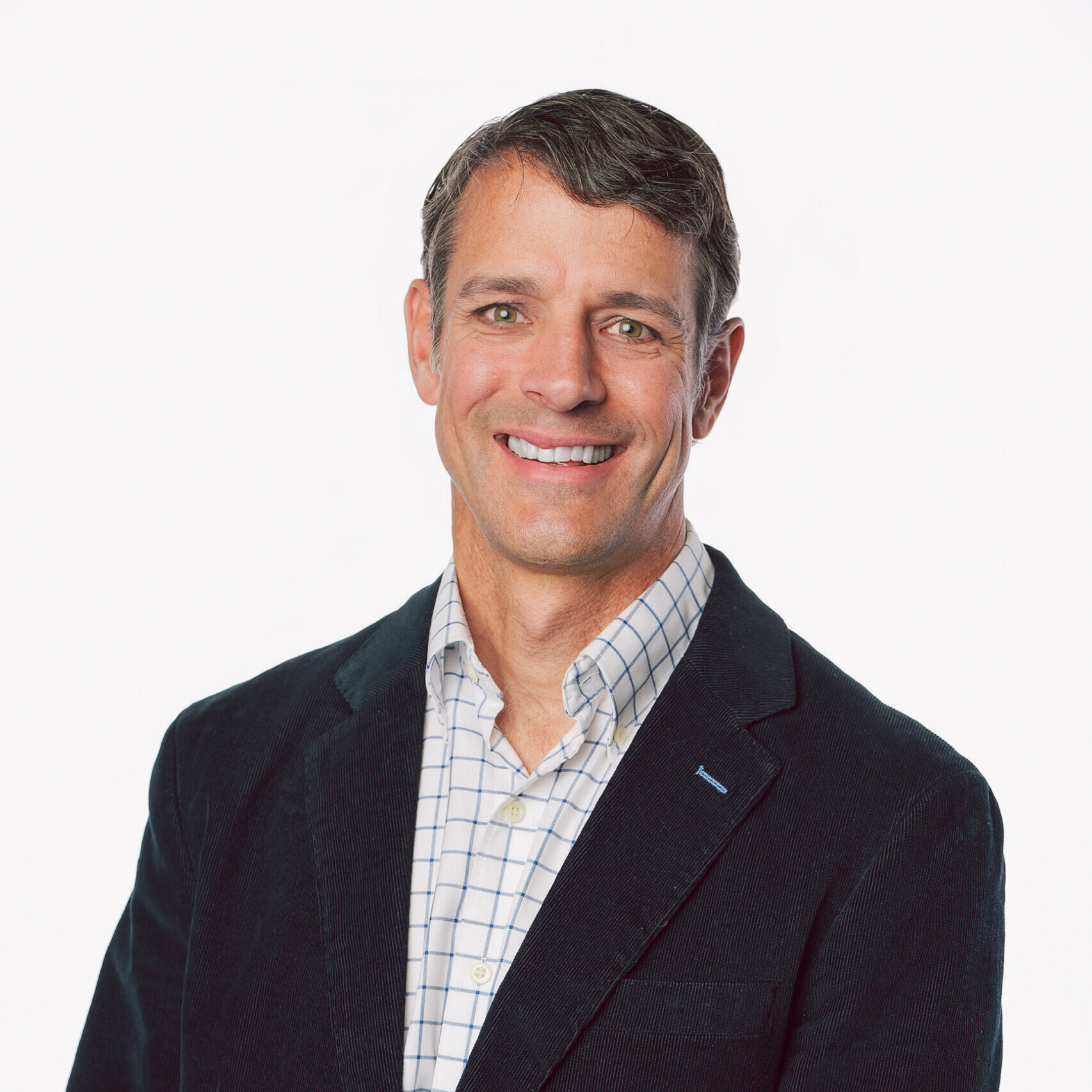
Nate McClennen
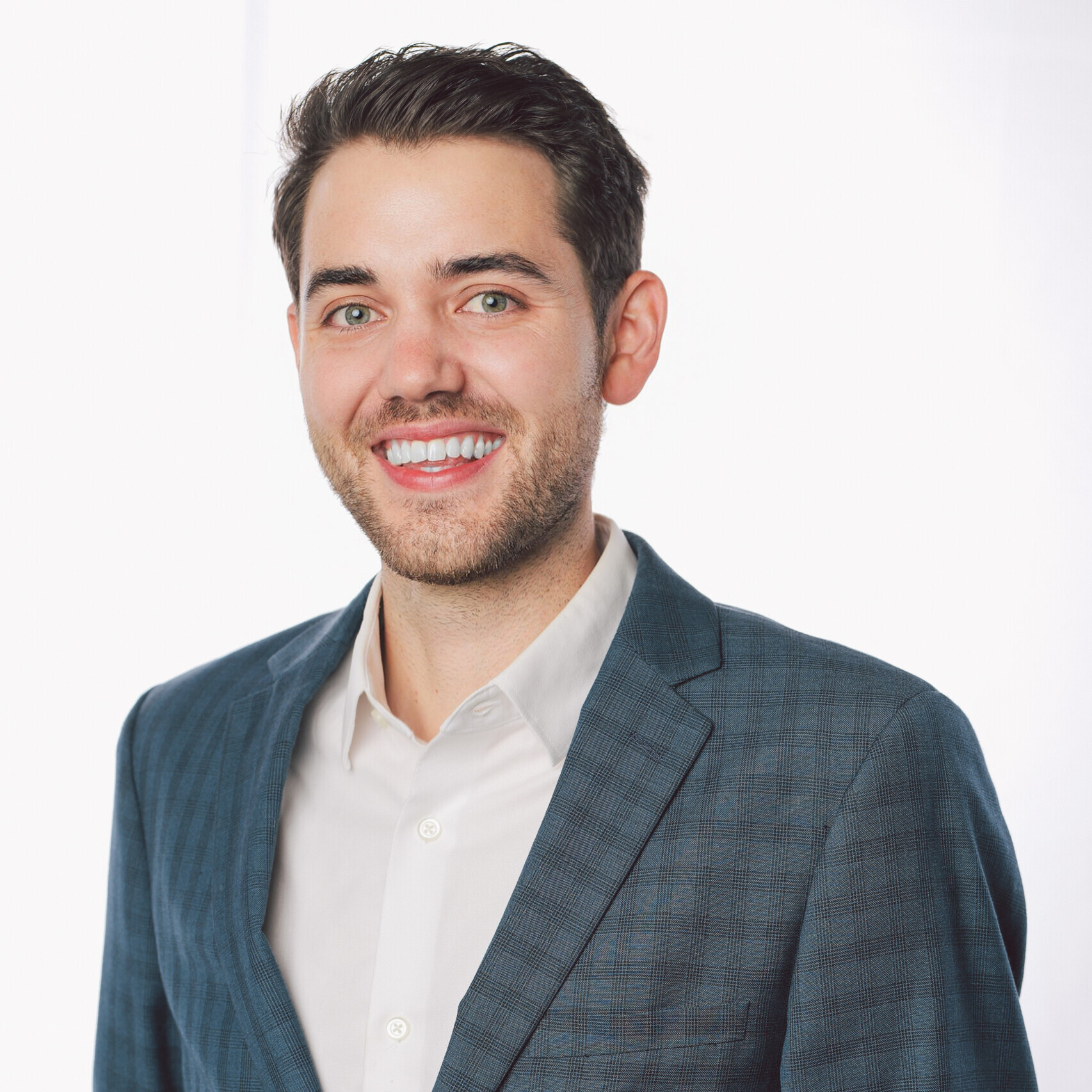


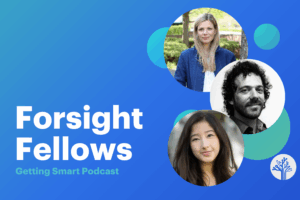
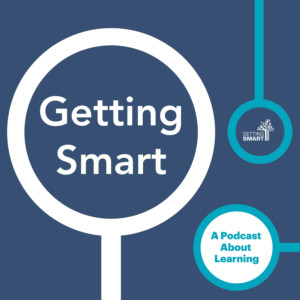

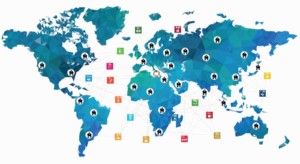


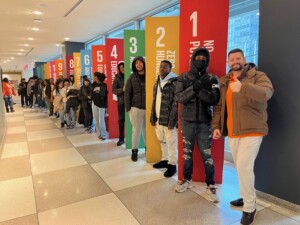
0 Comments
Leave a Comment
Your email address will not be published. All fields are required.